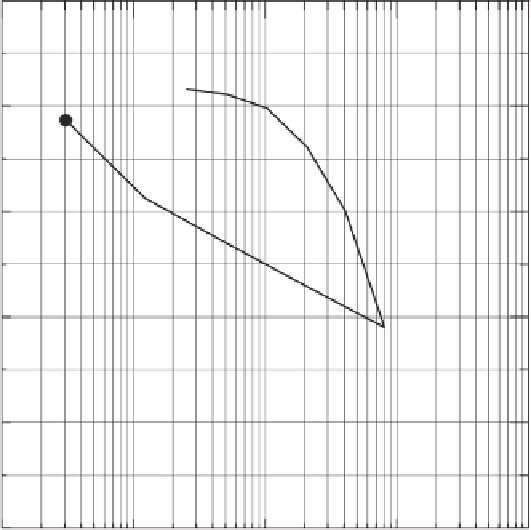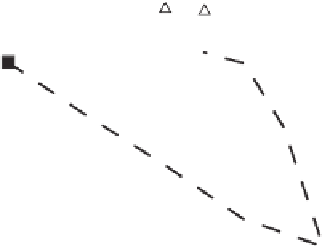Environmental Engineering Reference
In-Depth Information
1.2
1.1
1.0
0.9
σ
-
u
a
= 25 kPa
0.8
-
u
a
= 75 kPa
σ
-
u
a
= 150 kPa
σ
0.7
1
10
100
1000
10,000
Net normal stress,
σ
-
u
a
(kPa)
Figure 14.28
Swelling pressures measured under swell from various surcharge load of 25, 75,
and 150 kPa (after Singhal, 2010).
14.4.11 Swell Pressure Measurements Using Other
Test Procedures
Feng et al., (1998) performed a series of oedometer tests
on expansive Regina clay. Four different test procedures
were used: (1) “loading after swell,” (2) “swell under load,”
(3) “constant volume,” and (4) “unloading.”
under various surcharge pressures,
P
1
−
2
. In the case of the
free swell-test, the two swelling pressures are the same (i.e.,
P
1
−
1
=
P
1
−
2
).
Five specimens were tested under different surcharge pres-
sures. The surcharge pressures were 5, 50, 100, 200, and
400 kPa, respectively (Fig. 14.29). The measured swelling
pressures
P
1
−
1
ranged from 550 to 710 kPa when the
P
1
−
1
definition was used to determine swelling pressure. The
measured swelling pressures were 710-790 kPa when the
P
1
−
2
definition was used to determine the swelling pressure.
14.4.11.1 Loading after Swell Procedure
The soil specimens were subjected to a vertical surcharge
pressure at initial water content conditions for the loading-
after-swell test procedure. A range of surcharge pressures
were selected and a specimen was prepared for each sur-
charge pressure. Water was added to each soil specimen
once the surcharge was applied and equilibrium had been
reached. When swelling of the specimen was complete, the
applied vertical pressure was increased in increments until
the specimen was compressed to a height less than its orig-
inal value.
The free-swell test is a special case of the loading-after-
swell procedure where the surcharge pressure is placed on
the soil specimen. Two definitions of swelling pressure can
be found in the literature related to this test procedure (Chen,
1988; Justo et al., 1984; and ASTM, 1986). In one case
the swelling pressure is defined as the pressure to compress
the specimen to its original void ratio (i.e.,
P
1
−
1
). In the
other case, the swell pressure is the pressure to compress
the specimen to the void ratio at the end of consolidation
14.4.11.2 Swell-under-Load Procedure
Several identical specimens were prepared and subjected
to different surcharge pressures by Feng et al. (1998). The
void ratios at the completion of consolidation under the sur-
charge load were plotted to produce the “before-inundation”
curve. The consolidated specimens were then inundated and
allowed to swell (or compress) under the applied surcharge
pressures. Specimens were allowed to swell after being sub-
jected to surcharge pressures of 5, 50, 100, 200, 400, 800,
1600, and 2600 kPa. The results are shown in Fig 14.30.
Two definitions of swelling pressure associated with this
test procedure can be found in the literature (Justo et al.,
1984; Sridharan et al., 1986).
The first definition uses the intersection of the “full-swell”
curve and a horizontal line to define swelling pressure (i.e.,
P
2
−
1
). The second definition uses the intersection of the




































Search WWH ::

Custom Search